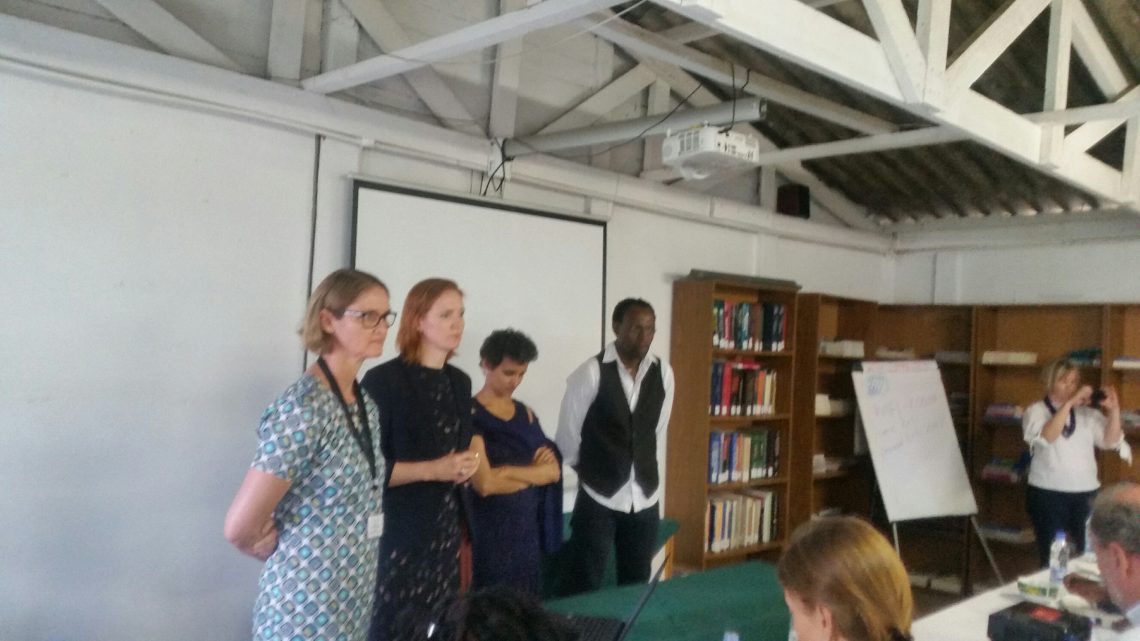By Byron Mutingwende
A recently completed study on Zimbabwean children who have had HIV infection since birth has shown that the pandemic affects the way the skeleton grows.
This emerged during the presentation of research findings at a meeting organised by the Biomedical Research and Training Institute (BRTI) and the London School of Hygiene and Tropical Medicine (LSHTM) held in Harare on 26 March 2018.
The LSHTM is one of BRTI’s key collaborating institutions, and a team from the institution is visiting Zimbabwe to discuss opportunities for augmenting collaborations, strengthening research capacity and building future research initiatives.
Dr Celia L Gregson, Consultant Senior Lecturer in Musculoskeletal Medicine in the Department of Translational Health Sciences at the University of Bristol in the United Kingdom said the Global Burden of Disease Study 2016 had shown that musculoskeletal disease (diseases of bones, muscle and joints), account for a significant burden of disability in sub-Saharan Africa, as they also do for Zimbabwe.
“With Prof Rashida Ferrand, and Edith Majonga, we have just completed a study on Zimbabwean children who have had HIV infection since birth. Firstly we showed that a third of children had a smaller skeleton suggesting HIV is affecting the way the skeleton grows. Then we showed that those children who had a delay in starting treatment for their HIV infection, had a lower amount of bone, which we think makes their bones weaker and potentially more susceptible to fracture.
“These findings very much suggest that children with HIV infection should start treatment as soon as they can. But there remains much unknown in this area, so Dr Gregson and Prof Ferrand are helping Dr Ruramayi Rukuni, a Zimbabwean Public Health Doctor who has been awarded research funding from the Wellcome Trust, to investigate the effect of HIV on the growing adolescent skeleton in much more detail than has ever been studied before,” Dr.Gregson said.
Dr Rukini will be helped by Cynthia Mukwasi-Kahari, who will be using a new specialist bone scanner that Dr Gregson has just arranged to be transferred from Johannesburg to Harare, who will be looking at how HIV infection affects what is inside the bones.
This new scanner is only available in two other places in the region – The Gambia and Johannesburg, so this is a rare opportunity for research in Zimbabwe. Overall this 3-year project will answer a lot of very important questions for the first time, and really put Zimbabwe on the map in terms of bone health research.
She said in the next decade or more, of all the regions in the world, the greatest population growth is predicted for Sub-Saharan Africa (SSA).
“The population is ageing, and musculoskeletal diseases increase with age. This is expected to convey substantial increases in fracture rates across the region.
Hence, we have (a week ago) launched the skeleton of a new website for a new Network in Africa – SAMSON – the Sub-Saharan African Musculoskeletal Network.”
This is a network across West, East and Southern Africa. Current partners include MRC the Gambia, Makerere Univeristy in Kampala, Universities of Kwazulu-Natal and Wits in South A,frica and of course the BRTI and UZ in Zimbabwe.
SAMSON aims to build sustainable capacity in Musculoskeletal Health Research by creating a collaborative research platform; share learning in Musculoskeletal Health Research through the life course to reduce the burden of Musculoskeletal disease; inform health policy, promote training, research capacity development, knowledge transfer and public engagement through the life course for Musculoskeletal disease; and provide guidance to standardise methods for Musculoskeletal assessment.
Studying the skeleton throughout the course of life is key, because how one grows in childhood and adolescence determines what is known as our ‘peak bone mass’.
‘Peak bone mass’ is the maximum amount of bone one has in the skeleton, and occurs at a time when the skeleton is at its strongest – around the age of 20. After that the bones gradually age, and often become weaker such that one is put at risk of fractures from small injuries later in life.
Overall, the researchers feel that the work needed now across SSA is to quantify the extent of the problem and associated health costs; develop clinical tools and guidelines to direct management; prepare healthcare systems and workforces to manage increasing demand; and promote Musculoskeletal Health at a policy level.
